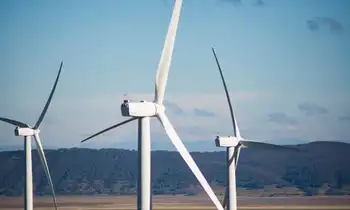California CCS Coalition is born
By Business Wire
Substation Relay Protection Training
Our customized live online or in‑person group training can be delivered to your staff at your location.

- Live Online
- 12 hours Instructor-led
- Group Training Available
Plans for the coalition began after a study published last fall confirmed California was not likely to attain its long-term target of reducing greenhouse gas emissions without investment in new, more efficient and lower-carbon infrastructure, including the use of CCS.
"The study confirmed what many of us already knew — that CCS is a viable solution in reducing greenhouse gas emissions," according to the coalition's newly appointed Executive Director Pete Montgomery. "But it also raised some flags in terms of where we go from here," he adds, noting legislative, regulatory and general public awareness lag behind what may be required to ensure successful CCS implementation.
The study, "Meeting California's Long-Term Greenhouse Gas Reduction Goals" by San Francisco-based Energy and Environmental Economics, Inc. (E3), is the first comprehensive look at the steps necessary to cut statewide greenhouse gas emissions by the year 2050.
It looks out 40 years and concludes that achieving long-term greenhouse gas reduction goals will require moving towards increased electrification, low-carbon power generation, and zero-emissions technologies. To reach emission reduction targets, the report stresses a mix of low-carbon power generation utilizing CCS, as well as wind, solar, biomass and nuclear.
"Without all of these emission reduction measures," the study states, "it will be extremely difficult to reduce statewide emissions to the range of 85 million metric tons of carbon dioxide equivalent by 2050."
If the electricity sector must move toward a low carbon future, by 2050, "almost all of the stateÂ’s fleet of fossil-fuel based power plants must be replaced by some combination of renewable energy, nuclear power and power generation with carbon capture and storage."
The report adds, “Conventional power plants built today may risk early retirement before the end of their useful life or will need to be retrofit with CCS if California is to meet its long-term greenhouse gas reduction goal.”
CCS is the process by which carbon dioxide, or CO2, the most common greenhouse gas, is separated from hydrocarbons in fossil fuels such as coal, natural gas, or petroleum coke, and then stored in deep underground formations. Among the best geologic formations in which to store CO2 are in sufficiently depleted oil and gas reservoirs.
The coalition was created to ensure CCS is an important part of any state carbon stabilization program with the goal being "to bring voices to the table throughout the state to demonstrate that CCS is practical, effective and safe," Montgomery adds.
The non-profit organization's mission is to represent the interests of CCS stakeholders in the legislative and regulatory arena and to educate key constituencies and organizations about facts regarding CCS. This includes increasing awareness of the history and safety of the technology, the realities surrounding geological storage and the critical importance of CCS to a comprehensive strategy of reducing emissions of carbon into the atmosphere.
The coalition will strive to increase awareness of CCS and to inform policy makers and the general public of CCS; encourage the deployment of CCS and incentives for low carbon power production; establish definitions for "low-carbon power;" encourage low-carbon power purchases by electric utilities, and more.
California CCS Coalition members to date include: Aera Energy, Chevron, Clean Energy Systems, Hydrogen Energy California, Sempra Energy Utilities, Southern California Edison, Shell and Western States Petroleum Association. The group hopes to attract other members, as well.
Hydrogen Energy California, which provided funding for the E3 study, is seeking to build California's first industrial scale hydrogen-fired power plant with CCS. Proposed for western Kern County, it will produce low-carbon power while safely capturing and storing 90% of its carbon dioxide emissions.
According to Jonathan Briggs, director of Americas for Hydrogen Energy California, "California's regulatory and legislative climate should further encourage the development of new energy technology. In particular, creating incentives for investment not just in renewable energy technology, but also for low-carbon base load power generation, like the Hydrogen Energy California project. The work of the coalition will be important in seeing this become a reality."











